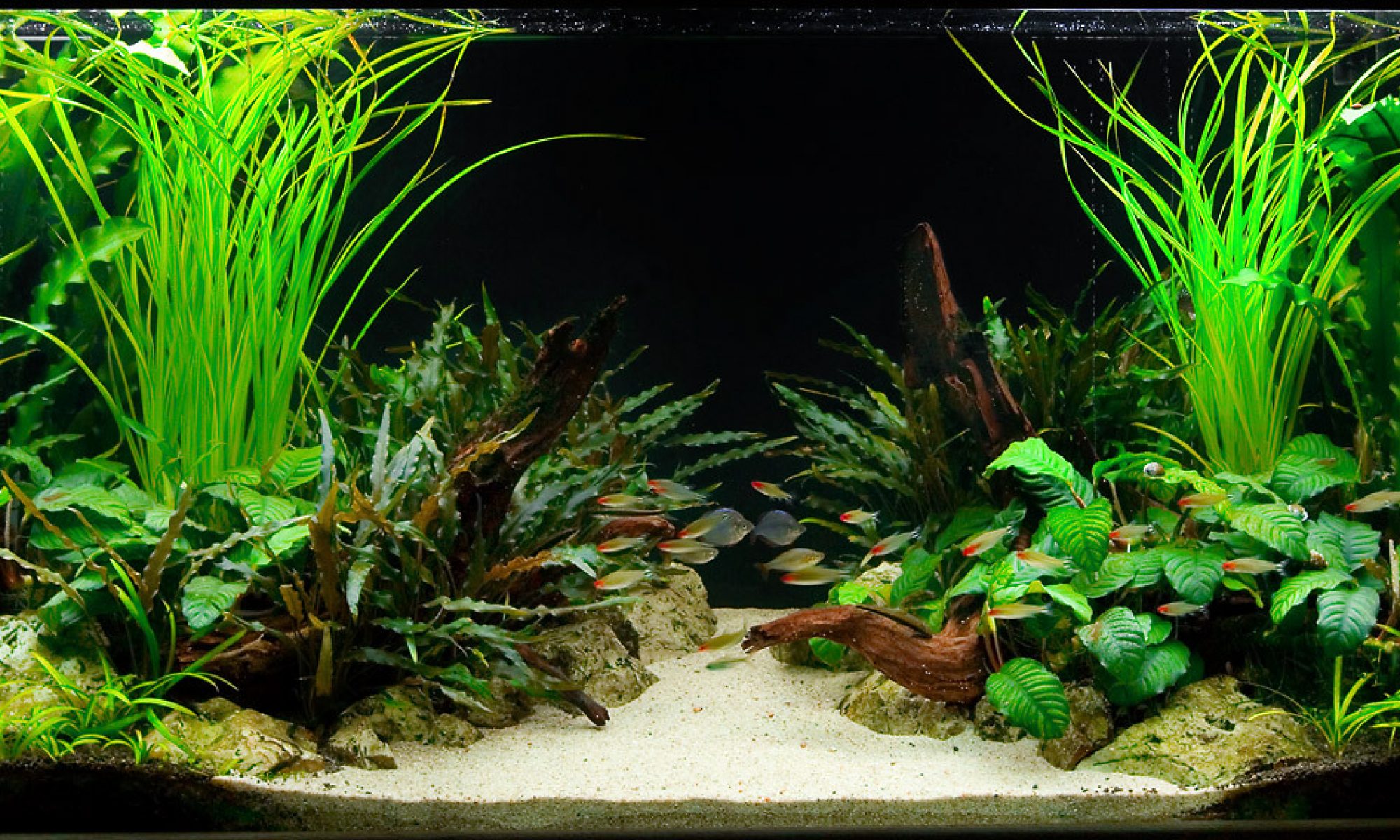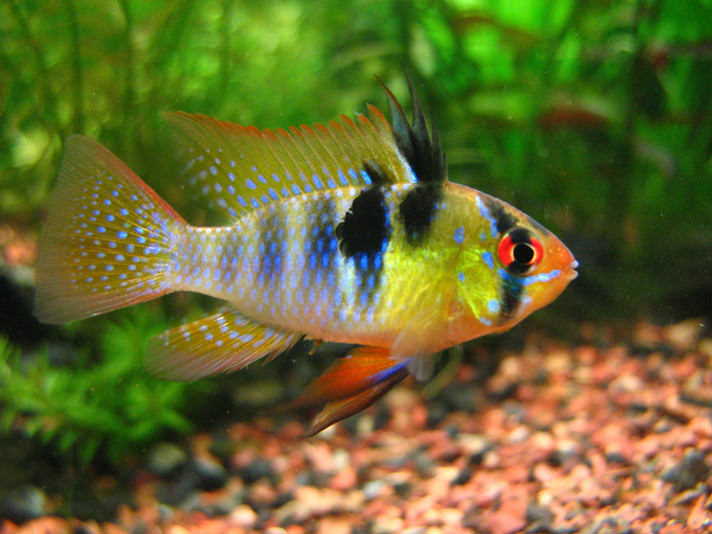The ram cichlid, Mikrogeophagus ramirezi, is a species of freshwater fish endemic to the Orinoco River basin, in the savannahs of Venezuela and Colombia in South America.
Details
| Type | Ciclids |
| Family | Cichlidae |
| Species | Mikrogeophagus ramirezi |
| Synonyms | Papiliochromis ramirezi, Apistogramma ramirezi, Microgeophagus ramirezi, Papilochromis ramirezi |
| Origins | Orinoco River basin, Venezuela and Colombia. |
| Sexual Dimorphism | Males with extended rays on the front of the dorsal fin. Females with a more round and pink coloured belly. |
| Length | 5 cm |
| Shoaling | No |
| Temperature | 25 - 30 deg C |
| Water parameters | pH 5.0 - 7.0, dH 1 - 8 |
Care
Rams are a peaceful, but delicate dwarf cichlid species that are recommended for experienced aquarists. They are best maintained as a male-female pair in a peaceful community setting with lots of plants and caves. They must only be kept in softwater aquaria, and should not be housed with any aggressive species which may bully them. Small groups of Rams can be kept together, but you may find that certain fish pair off, and when breeding, they can become a little territorial towards others. Frequent partial water changes are essential in the successful keeping of this species – excellent water quality must be maintained at all times. Most specimens offered for sale in the trade are captive-bred. Wild-caught fish can be larger and more colourful and so usually command a much higher price tag. Cultivated golden and long-finned varieties of this species are also available.Feeding
Flake, micropellets, small frozen foods such as mosquito larvae, brineshrimp and daphnia.Breeding
To breed your Ram cichlids, the water must be very soft (<5 dH) with a pH <7.0. The water temperature should be set at the high end of their preferred range. Females can lay up to 400 eggs (although 250 is a typical average sized brood), which both male and female will take turns in guarding and fanning with their pectoral fins. These eggs should hatch after 48-72 hours and the fry will become free-swimming after 5 days, at which stage they can be offered tiny foods such as infusoria and microworms, moving on to larger foodstuffs as they grow. The parent fish will herd the youngsters around the tank, protecting them from any potential predators. If you wish to ensure a high survival rate for your eggs/fry, it would be prudent to set up a dedicated breeding tank for this purpose.

